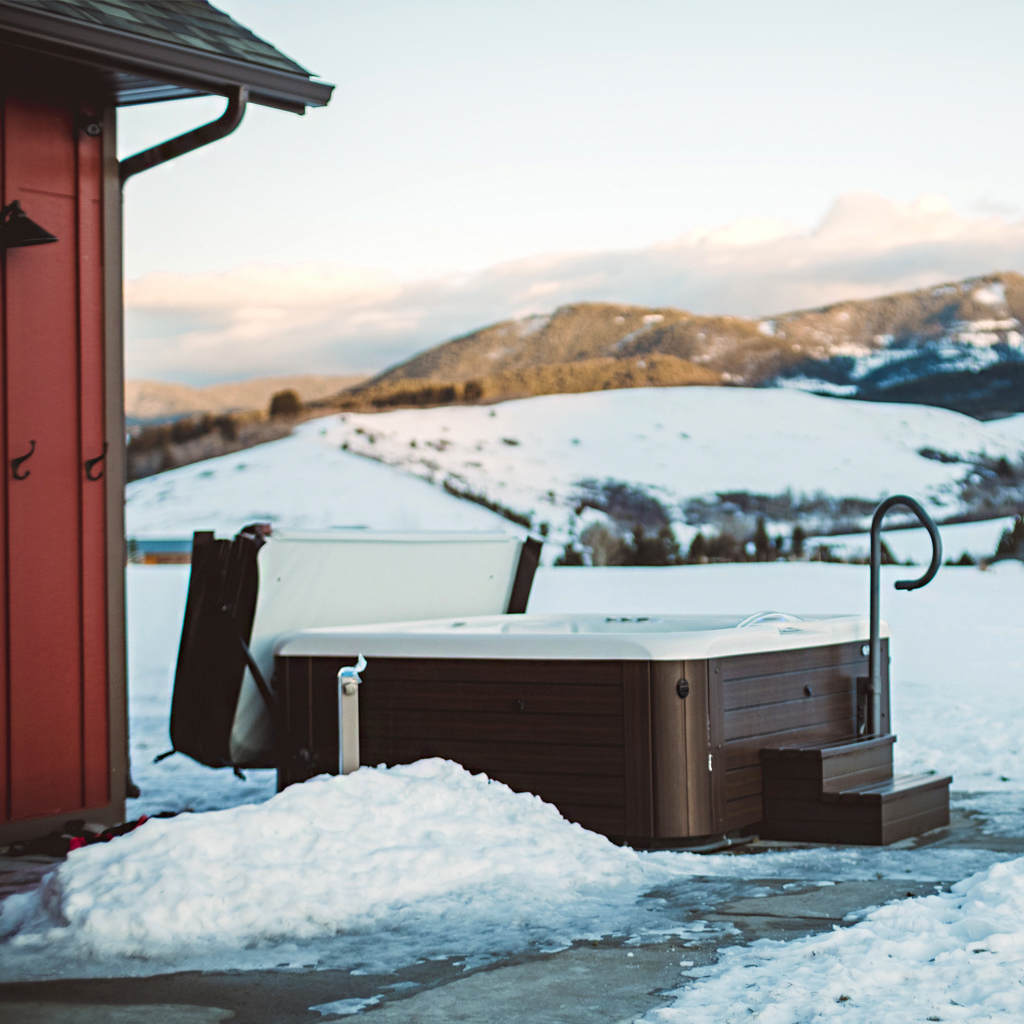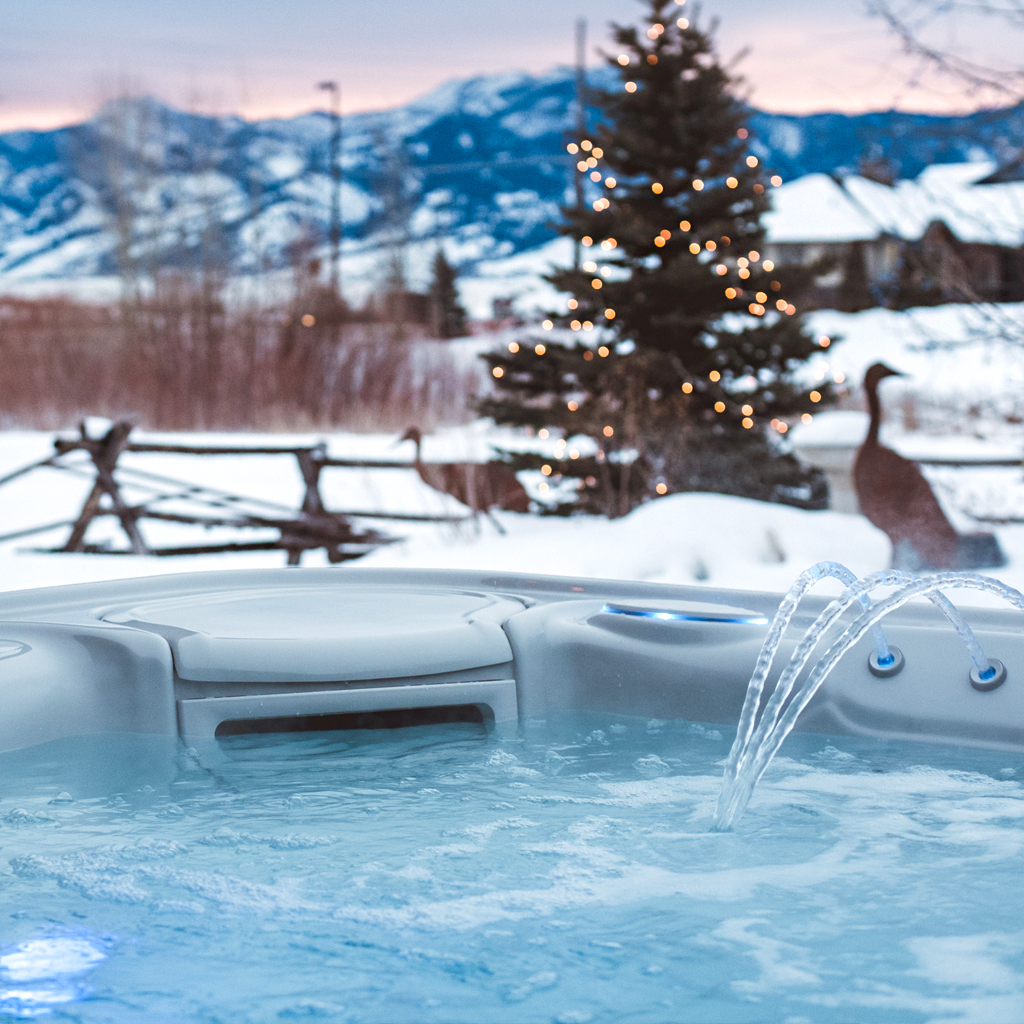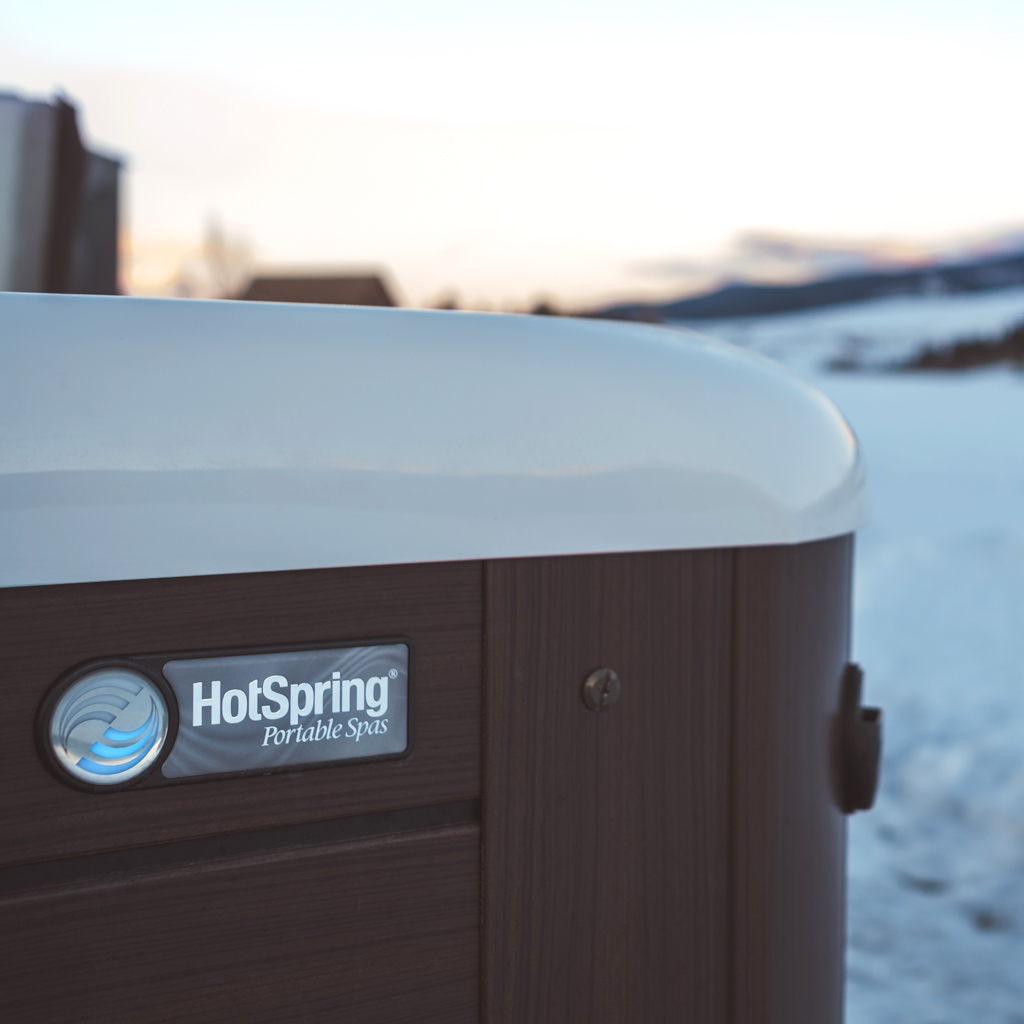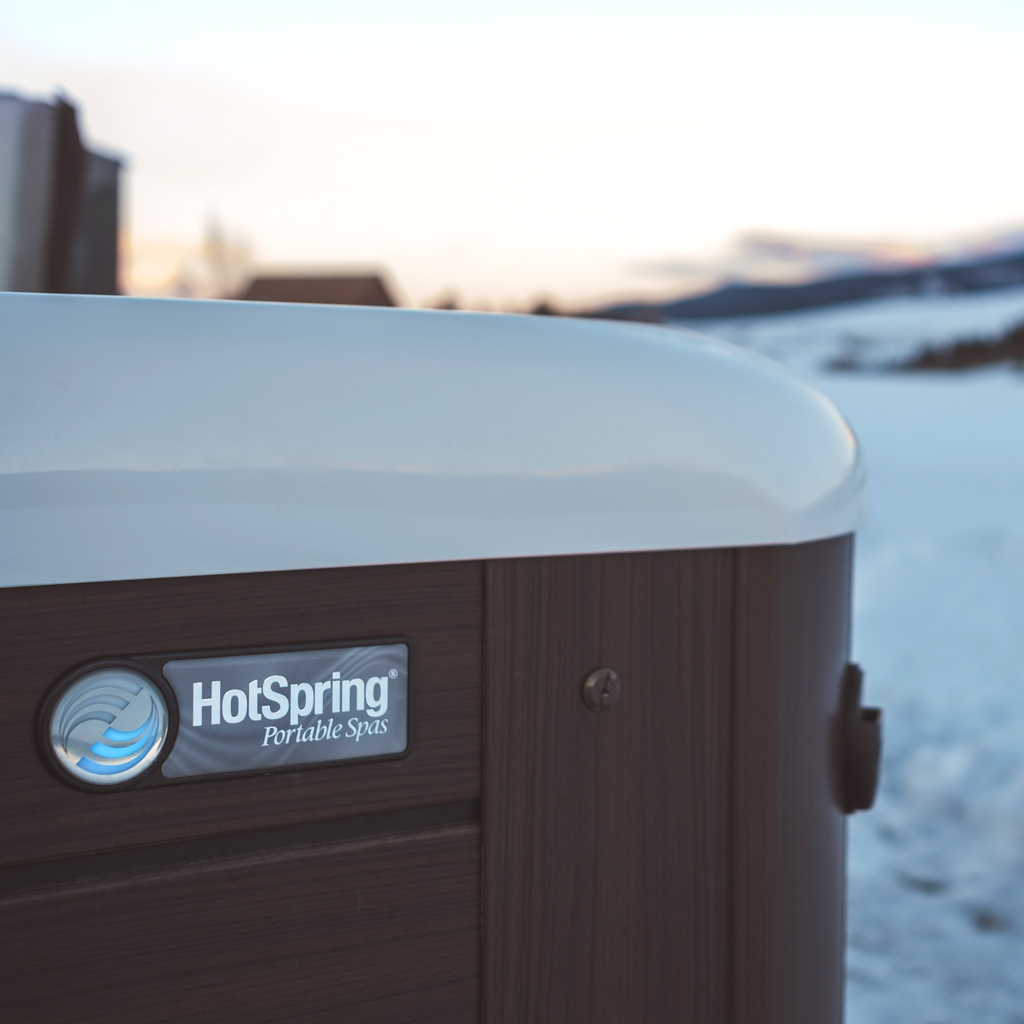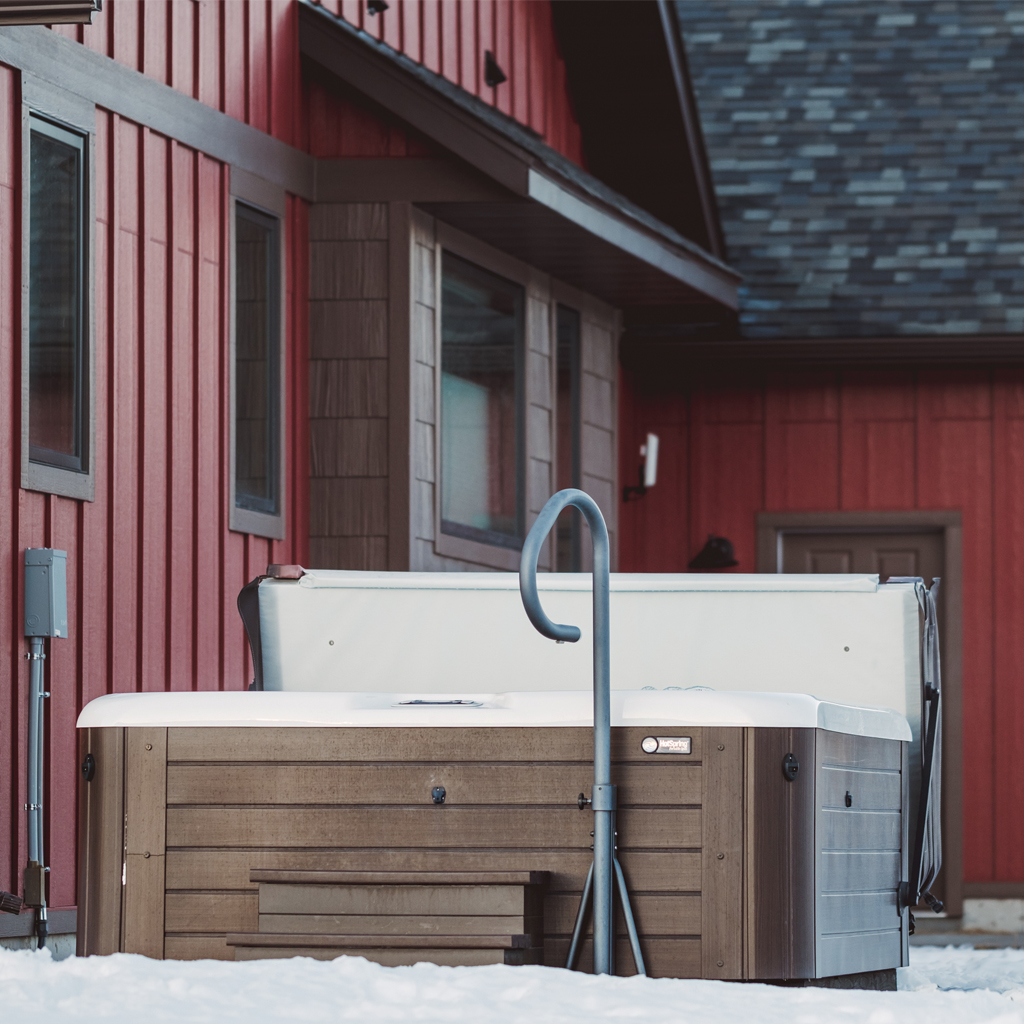Winter Hot Tub Costs
Advice - Hot Tub
WINTER HOT TUB COSTS: THE TRUTH
Hot tubs are enjoyed in every season, but with the cold weather approaching, soaking into warm, bubbly hot tub water is even more desirable. Soaking in your spa at the end of a long, cold day while catching snowflakes on your tongue in your personal bubble of steamy bliss may be the best way to enjoy a cold winter's night. Of course, you’re not just thinking about how rejuvenating soaking in your hot tub on a snowy day will be, you’re likely thinking about how these cold temperatures might affect the cost of running your hot tub.
The electricity your hot tub's heater uses to maintain your spa's hot water is an ongoing expense that is expected with hot tub ownership. This cost can certainly rise in the winter due to the frigid air that forces your heater to work harder. However, hot tub designers and engineers have made great strides in minimizing hot tub costs for owners. Poorly designed hot tubs won't necessarily have these efficient cost-saving features, which will in turn cause a spike in your electricity bill. High quality hot tubs are able to stand up to harsh winter temperatures, often resulting in minimal increases to your winter hydro bills. This blog aims to outline what tools you can use as an owner that will work to further protect your wallet this winter.
DOES YOUR HOT TUB HAVE A BASE PAN?
For those of you who have spent time camping or outdoors, you'll like understand that one of the easiest ways to lose heat is through direct contact with the ground. During the winter months, the earth can absorb large amounts of heat.
To prevent this heat loss in hot tubs, base pans are commonly included in most high-quality spas. These base pans sit between the hot tub’s bottom layer, which comes into direct contact with the ground, and the hot water you soak in. This extra thermal barrier prevents heat from escaping into the ground. Hot tubs with base pans are far more effective at preserving heat than those without them, and therefore become less expensive to run in the winter in comparison to spas without base pans. Do yourselves, and your wallets, a favour by ensuring that your spa comes equipped with a base pan.
DOES YOUR SPA HAVE QUALITY THERMAL INSULATION?
The quality of your spa's insulation will make a significant difference when it comes to the cost of running your hot tub. Hot tubs with either little insulation, or low-quality insulation, will likely lose much of their heat through the four sides of the spa; forcing the heater and other spa mechanisms to work harder in order to keep the water temperature consistently high. The end result is higher energy costs. In order to keep all of that heat inside your spa, high-quality hot tubs come with dense, energy-efficient full-foam insulation.
The hollow areas in between the outer frame and inner shell are filled with thick foam that hardens inside the hot tub. This foam saturates the whole area and forms a layer that entirely fills the interior gap of the spa. Luxury and premium hot tubs take full-foam insulation a step or two further, with innovations such as specially-engineered multi-density foam that can also provide additional structural support for your spa. By making sure your heat stays inside your spa, high-quality insulation will significantly reduce the amount of energy your heater must use to keep your water hot. Our HotSpring Spas and Caldera Spa units are equipped with this money-saving technology.
COVER, COVER, COVER!
As humans, we lose most of our heat through our heads, which is why many of us wear hats and hoodies in the winter. In a similar vein, if hot tubs aren’t securely covered when not in use, they lose quite a lot of heat. Whenever hot water makes direct contact with cold winter air, a rapid cooling process occurs. This puts significant stress on the heater as it strains to keep up, which in turn spikes the cost of running your hot tub.
To prevent this, high-quality hot tubs commonly come with thick, durable, insulating covers. This barrier, between hot water and cold air, does a fantastic job of preventing heat loss. Your cover should create a tight, secure seal around the edges of your hot tub to keep heat from leaking out. Covers are built thick and heavy to prevent heat from escaping. Covers come into direct contact with the outside elements, including rain and snow, therefore they are designed to be durable and long-lasting. In inclement weather, a cover lifter is an absolute necessity for moving the cover on and off of your hot tub. These devices allow you to effortlessly protect your hot tub and hot tub cover from the effects of cold weather.
It's a part of reality that your hot tub cover will eventually get old and become difficult to lift. Over many years of use, hot tub covers may crack and sag as well, which will lessen their protective strength. These are all problematic symptoms that may be telling you that it’s time to replace your hot tub cover. Hot tub covers save you from filling your tub with water as it won’t evaporate in the summer and it will keep the heat in and the harsh elements out during the winter. If you think that you may be due for a new hot tub cover, we encourage you to click here for more information.
HIGH QUALITY SPAS WILL END UP SAVING YOU MONEY!
A well-built, high-quality hot tub with a base pan, dense insulation, and a thick, fitted cover is surprisingly inexpensive to run—even in winter. While multiple factors including your location, utility company, climate, and the temperature at which you keep your spa running will determine the actual price, with extra care and choosing a high quality hot tub with modern engineering, your electricity bill will not send you into the winter blues.

